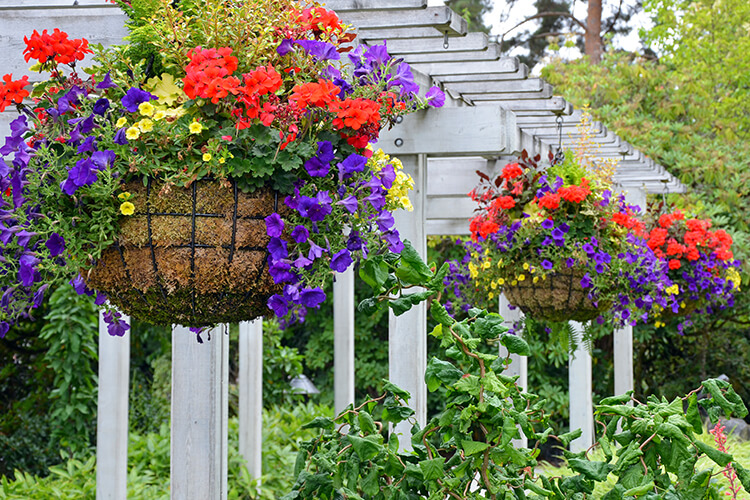
Give Annual Flowers A Second Wind
It’s late summer and for many people, that means it is time to start thinking about fall flowers. With fall just around the corner, many people start thinking about pulling out those annuals and overgrown perennials to get ready for the cooler months.
However, if your flower beds and planters are looking a bit past their prime right now, don’t write them off. Summer’s not over yet. Here are some tips on how to get your late-summer annuals back into shape so you can enjoy their blooms until the frost.
Annuals can start to get leggy this time of year with extreme heat and/or prolonged periods without adequate care. Other annuals maybe just didn’t fare well in this summer’s damp, humid conditions.
Cut annuals back to allow for new growth
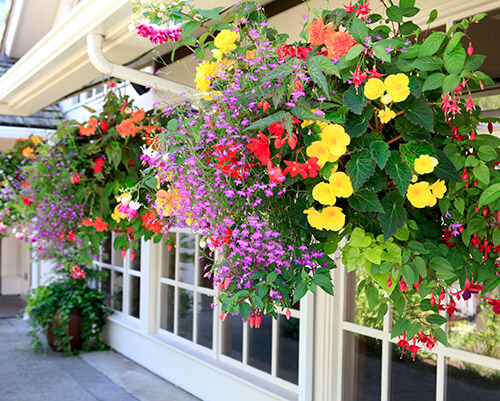
Mix of annual flowers and foliage in hanging baskets
Some annuals thrive in the dog days of summer, but if some of your blooms are looking more dead than alive, trim them back, removing all dried out stems and foliage, and cutting back the healthier looking parts by about 30-50 percent.
The heat-loving flowers will continue to thrive for the time being, but once the weather starts to cool down, the trimmed down plants will come back to life and provide another round of colour to finish out the season.
Replace flowers that can’t be brought back to life
If there’s no reviving select plants, you might consider replacing them, as annuals are generally being cleared out at nurseries so the pricing will be favourable. If you have a lot of affected flowers in pots and beds, consider only replacing those in high-visibility areas, and simply remove others and add to yard waste.
Replace annual flowers with a fall favourite

Mums offer beautiful late-summer colour and will come back every year when planted.
Mums are starting to appear in nurseries across Southwestern Ontario right now. They’re typically positioned as an annual. But Chrysanthemums planted in the ground, given sufficient time to get established, and mulched well before the snow flies will generally tolerate our winters, coming back year after year. And they’re available in a wide range of beautiful colours, making them a fantastic candidate to replace or compliment annual blooms.
Create balance
Annuals are ideally used to provide bursts of colour in planters and flowerbeds throughout the summer. Be sure to balance the lively hues of annuals with dependable, low-maintenance perennials that provide ever-evolving visual interest from spring to fall.
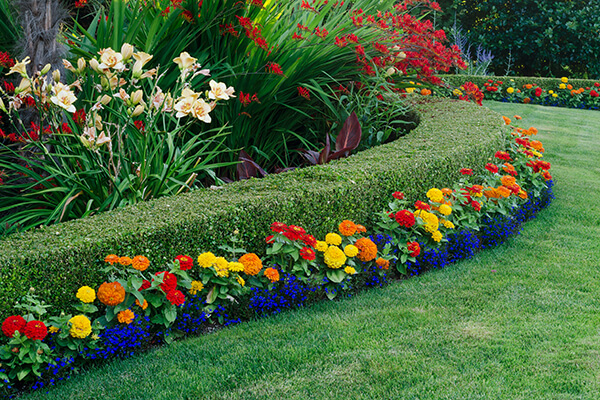
Annual flowers mixed with shrubs and perennials for evolving visual interest.
You’ll still be able to find many perennials at nurseries at this time of year. Opt for native, non-invasive species, which are adapted to our climate. Not only do they typically require less maintenance than their more exotic counterparts, but they also can provide food and habitat for pollinators – birds, bees, and butterflies.
If you’re relying too heavily on annuals to provide colour and visual interest around your home, or if you’re ready for a landscaping makeover, contact us anytime. We’d love to help you create a plan that better suits your lifestyle, needs, and budget.

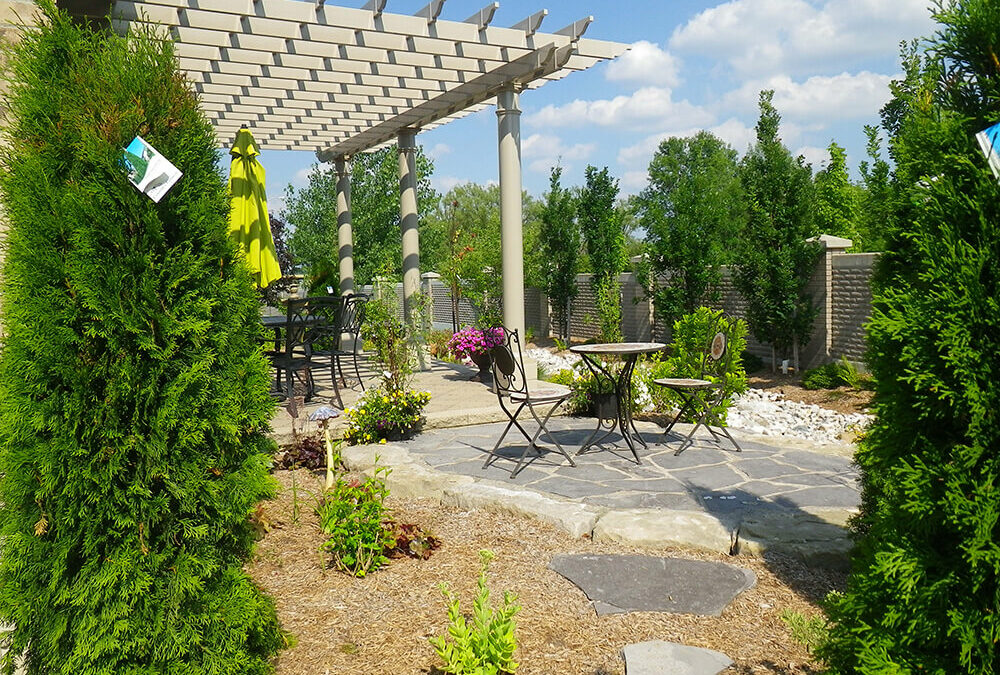
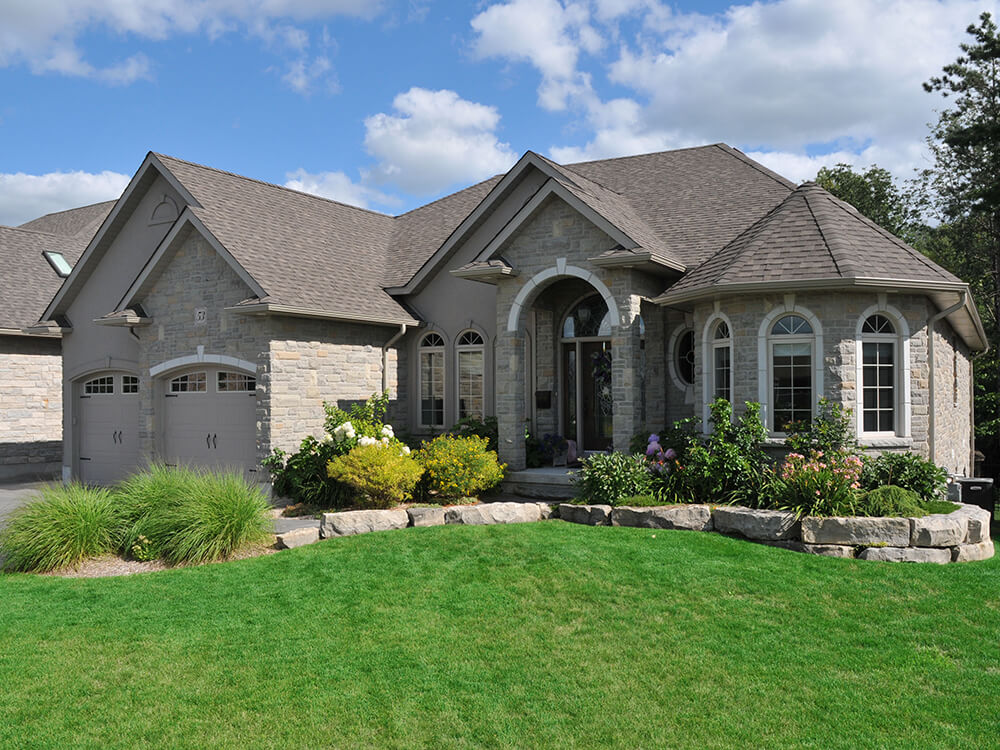 If you search online for ways to increase a home’s value, one method that almost invariably tops the list is to increase your home’s curb appeal. After all, the front of your home provides the first impression for potential buyers, whether they’re passing by or viewing your home online.
If you search online for ways to increase a home’s value, one method that almost invariably tops the list is to increase your home’s curb appeal. After all, the front of your home provides the first impression for potential buyers, whether they’re passing by or viewing your home online.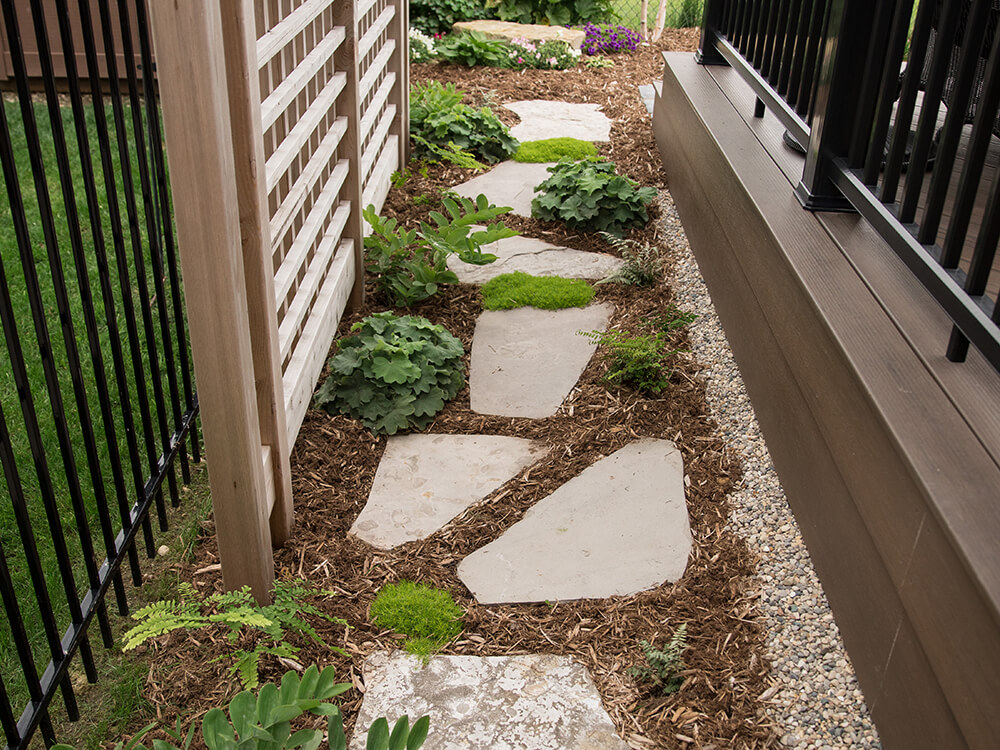 If you’re looking to upgrade your home’s exterior – front, sides, or back – consider updates that will enhance livability, functionality, and practicality. Not only will this maximize your enjoyment, but when it comes time to sell, potential buyers will be able to see themselves relaxing in, rather than working on, the yard and gardens.
If you’re looking to upgrade your home’s exterior – front, sides, or back – consider updates that will enhance livability, functionality, and practicality. Not only will this maximize your enjoyment, but when it comes time to sell, potential buyers will be able to see themselves relaxing in, rather than working on, the yard and gardens.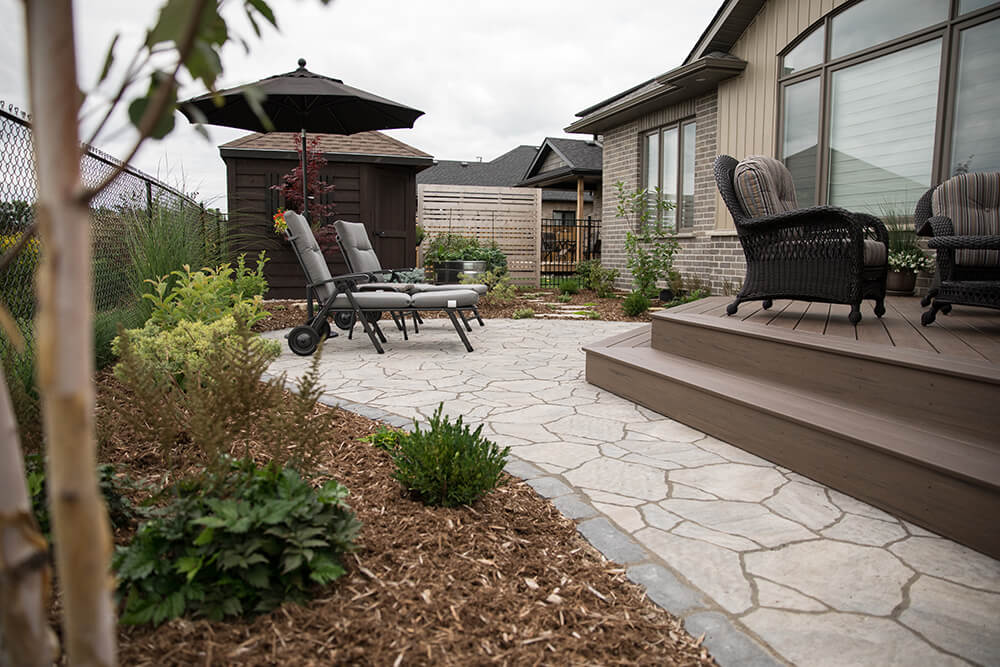 Walkways, patios, and retaining walls are gratifying additions to a home’s exterior. In keeping with the theme of minimal maintenance, though – a focus of almost every one of our customers – we recommend being mindful of the materials you use.
Walkways, patios, and retaining walls are gratifying additions to a home’s exterior. In keeping with the theme of minimal maintenance, though – a focus of almost every one of our customers – we recommend being mindful of the materials you use.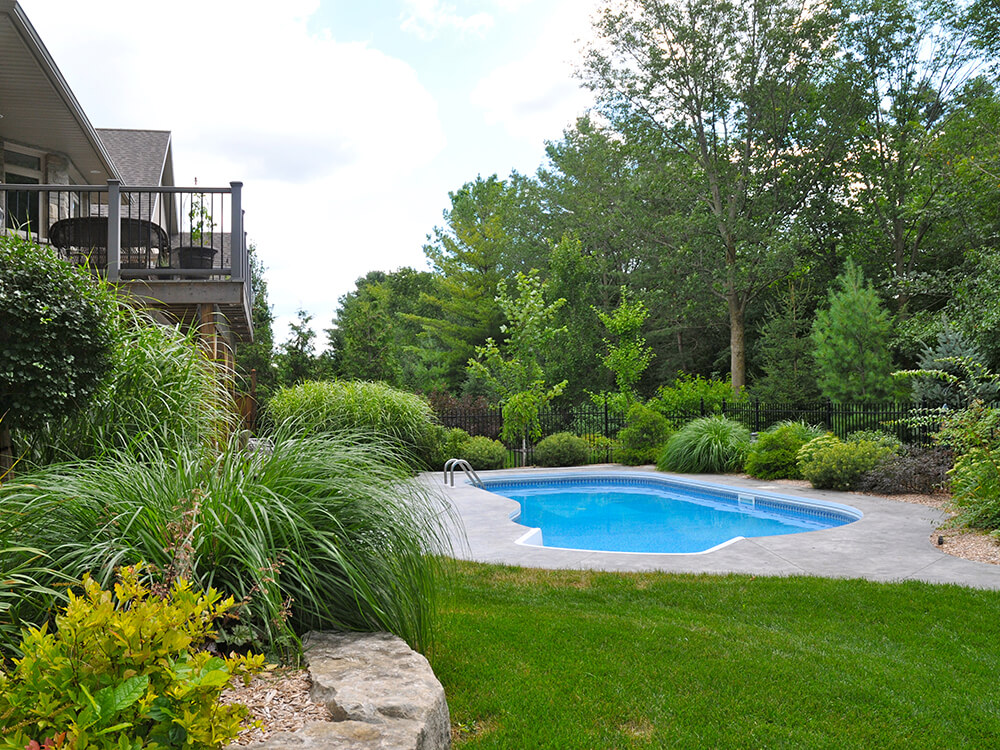 Plants, trees, and shrubs can be used to camouflage imperfections, add privacy, and enhance the existing beauty around your home’s exterior and yard. For example, an exposed foundation can make a home appear old and unkempt. But, planting a balanced selection of plants and shrubs appropriate for the location’s sun exposure can add depth and colour, providing a welcome distraction from your foundation’s drab, grey expanse.
Plants, trees, and shrubs can be used to camouflage imperfections, add privacy, and enhance the existing beauty around your home’s exterior and yard. For example, an exposed foundation can make a home appear old and unkempt. But, planting a balanced selection of plants and shrubs appropriate for the location’s sun exposure can add depth and colour, providing a welcome distraction from your foundation’s drab, grey expanse.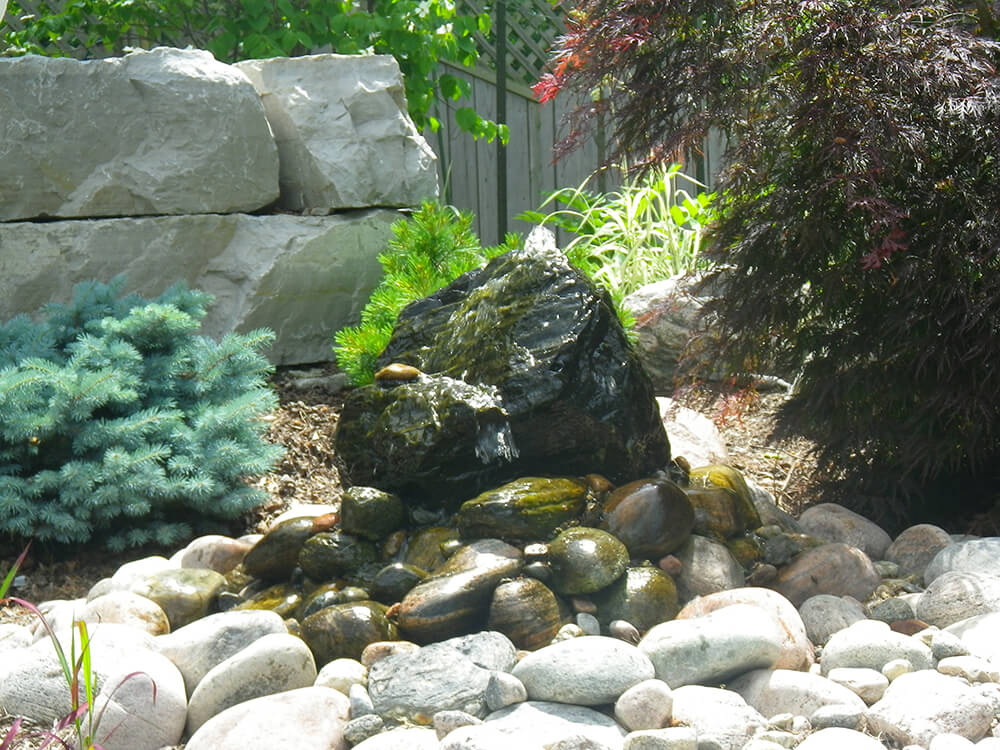 Add unique atmosphere to your outdoor living areas, walkways, and/or front entrance with lighting and water. Ponds, streams, waterfalls, fountains, and bubbling rocks add an audio-visual element that has a universally relaxing effect. And including lighting along walkways, trees, water features, pools, and patios enhances outdoor safety and enjoyment after the sun goes down.
Add unique atmosphere to your outdoor living areas, walkways, and/or front entrance with lighting and water. Ponds, streams, waterfalls, fountains, and bubbling rocks add an audio-visual element that has a universally relaxing effect. And including lighting along walkways, trees, water features, pools, and patios enhances outdoor safety and enjoyment after the sun goes down.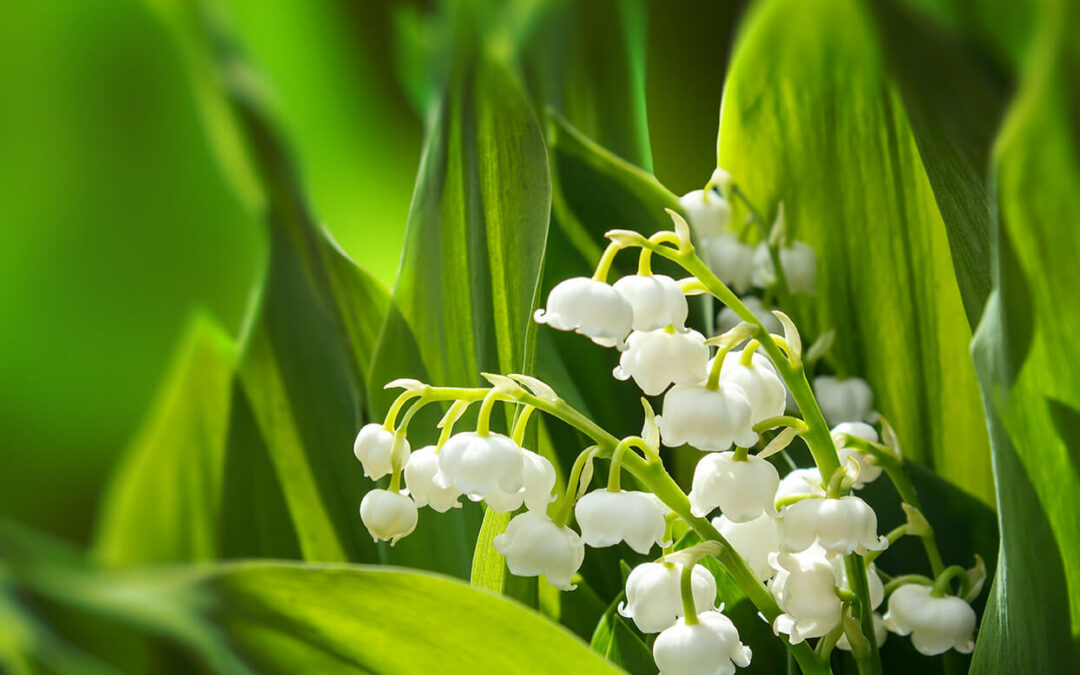
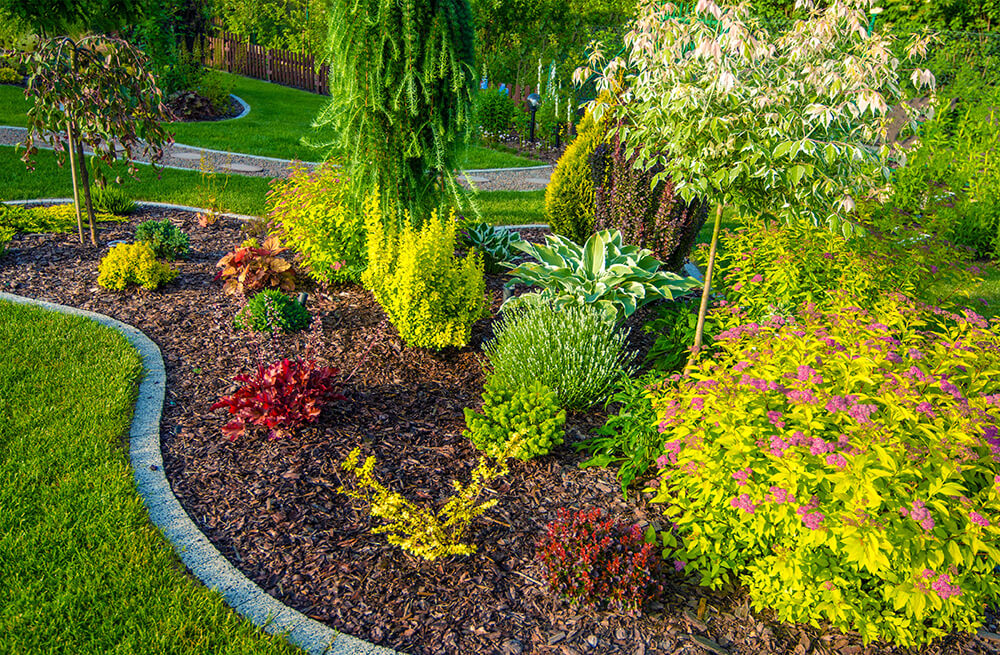
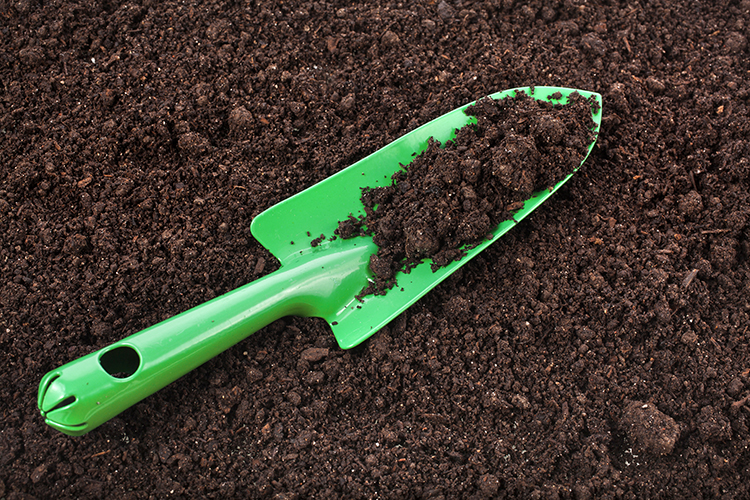 Soil is foundational to everything landscaping-related. The naturally occurring soil in your area may be clay-based. Clay holds onto water, which can promote poor drainage and lead to root rot in plants and trees.
Soil is foundational to everything landscaping-related. The naturally occurring soil in your area may be clay-based. Clay holds onto water, which can promote poor drainage and lead to root rot in plants and trees.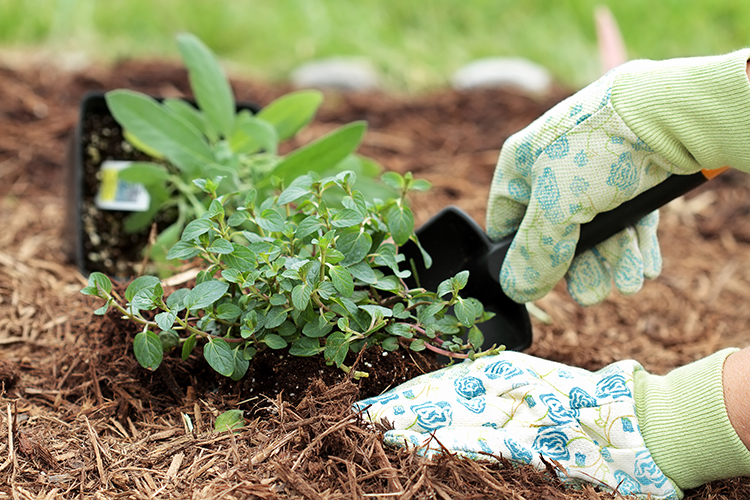 There are various types of mulch, including rustic options like straw, grass clippings, and shredded leaves. Some gardeners are even using newspaper as most of them are printed with neutrally-derived inks.
There are various types of mulch, including rustic options like straw, grass clippings, and shredded leaves. Some gardeners are even using newspaper as most of them are printed with neutrally-derived inks.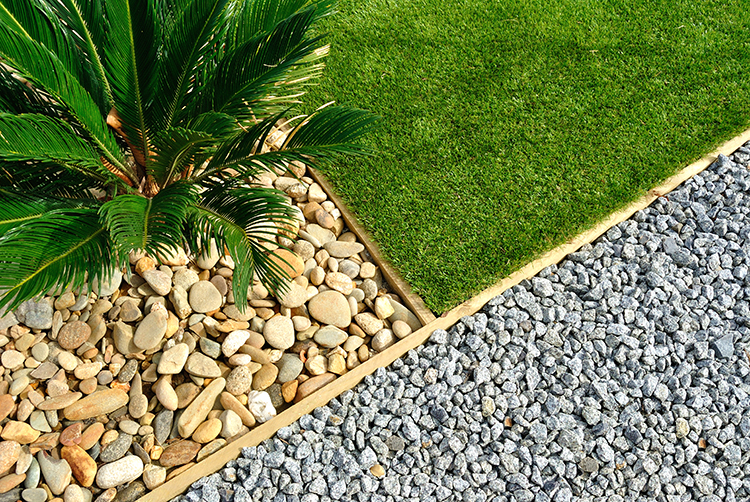 Stone has multiple applications in landscaping. Natural stone can be used with landscape fabric in place of mulch to suppress weeds and help retain moisture. Large natural rocks can be used as standalone sculptures and can even be made into water features. And of course, flat stone like flagstone is a great natural option for walkways, stairs, and patios.
Stone has multiple applications in landscaping. Natural stone can be used with landscape fabric in place of mulch to suppress weeds and help retain moisture. Large natural rocks can be used as standalone sculptures and can even be made into water features. And of course, flat stone like flagstone is a great natural option for walkways, stairs, and patios. Sand is an aggregate that’s most often used as a foundation for stone and pavers. It’s typically a combination of granular A gravel, sand or high-performance base stone.
Sand is an aggregate that’s most often used as a foundation for stone and pavers. It’s typically a combination of granular A gravel, sand or high-performance base stone.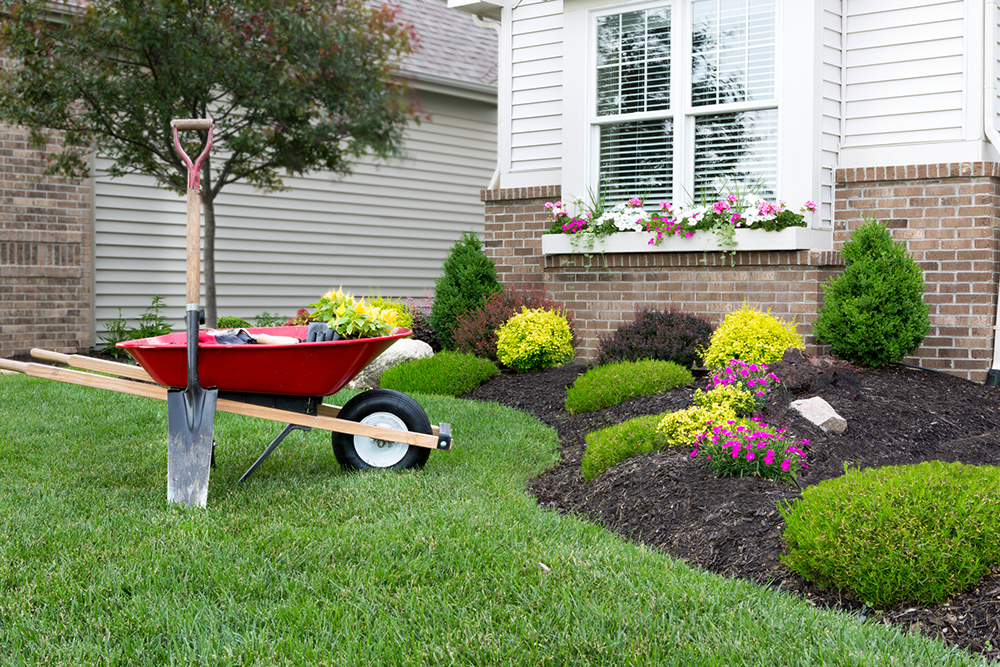
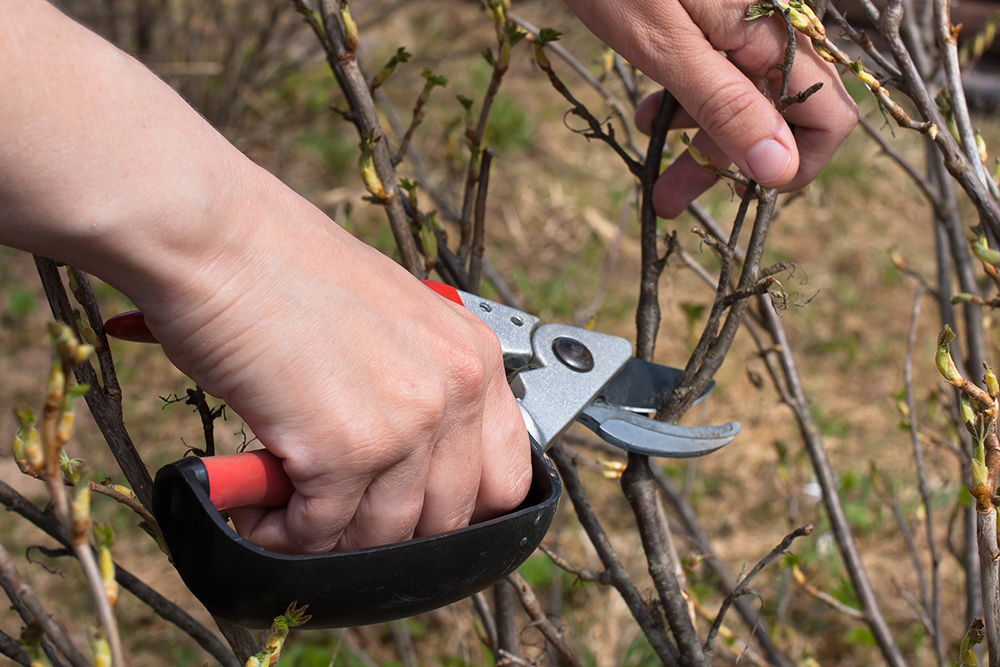 Hand Pruners or Secateurs
Hand Pruners or Secateurs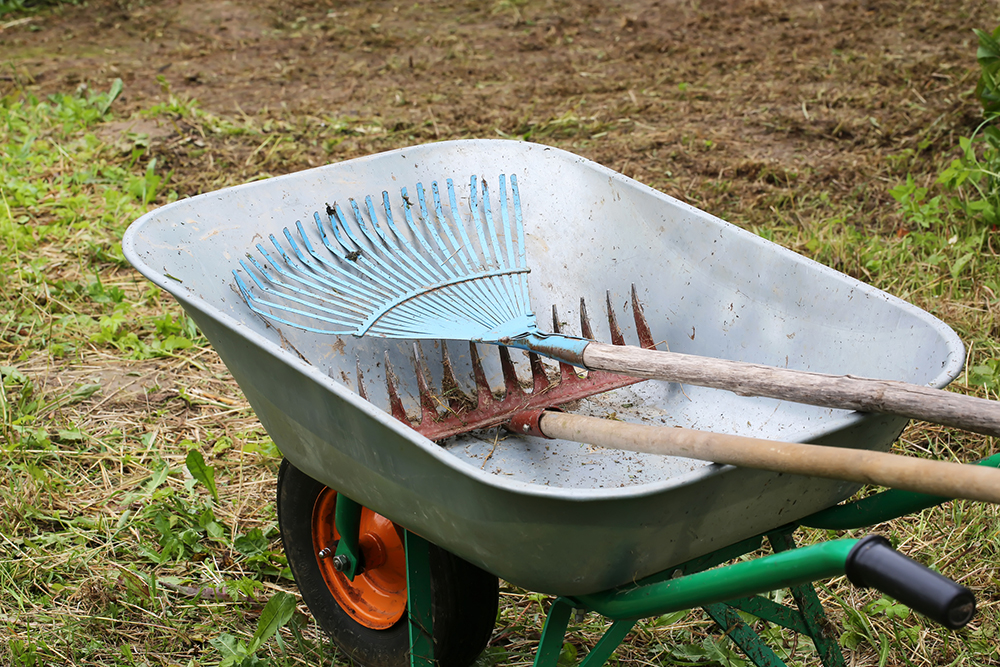 A garden rake on the other hand, is a bit heavier and has one flat row of short steel tines. If you want to transfer, level out, and/or comb through soil, this is the device for the job. Other types of rakes include the hand rake, shrub rake, and
A garden rake on the other hand, is a bit heavier and has one flat row of short steel tines. If you want to transfer, level out, and/or comb through soil, this is the device for the job. Other types of rakes include the hand rake, shrub rake, and 
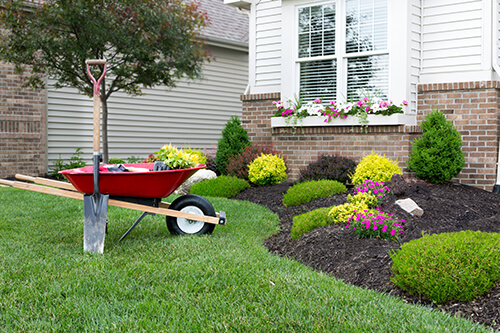 If your home has a grass-dominant greenspace in front, keeping your lawn neat and tidy is a no brainer for improving and maintaining curb appeal. Keep grass cut to a consistent length, but not too short as doing so can cause undue stress and increased exposure to weeds and pests. Edging your lawn along walkways, gardens, and your driveway provide a nice, polished appearance as well.
If your home has a grass-dominant greenspace in front, keeping your lawn neat and tidy is a no brainer for improving and maintaining curb appeal. Keep grass cut to a consistent length, but not too short as doing so can cause undue stress and increased exposure to weeds and pests. Edging your lawn along walkways, gardens, and your driveway provide a nice, polished appearance as well.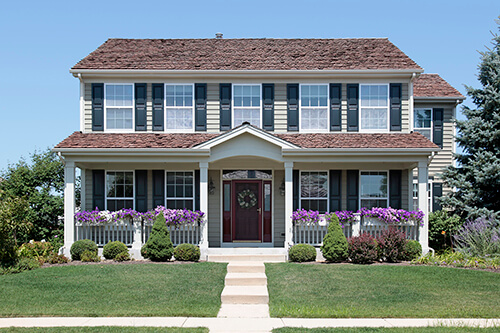 Fill in flat, exposed areas of your home’s exterior with shrubs, ornamental grasses, and small trees. This will add depth, balance, and visual interest to areas that were previously a blank canvas. Remember not to obstruct windows.
Fill in flat, exposed areas of your home’s exterior with shrubs, ornamental grasses, and small trees. This will add depth, balance, and visual interest to areas that were previously a blank canvas. Remember not to obstruct windows. Consider replacing your asphalt driveway with a professionally-installed stamped concrete or natural paver driveway. This area of your front yard is highly visible from the street and sidewalk, so making it visually interesting not only adds curb appeal but also distinguishes your home from others in your neighbourhood.
Consider replacing your asphalt driveway with a professionally-installed stamped concrete or natural paver driveway. This area of your front yard is highly visible from the street and sidewalk, so making it visually interesting not only adds curb appeal but also distinguishes your home from others in your neighbourhood.